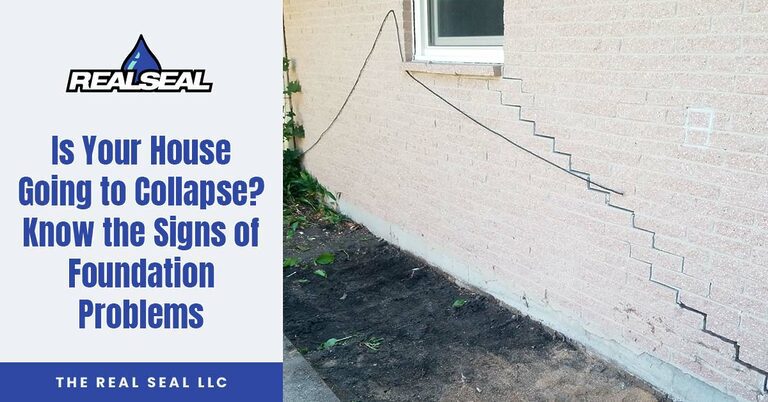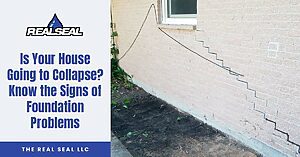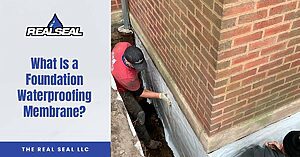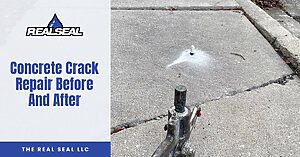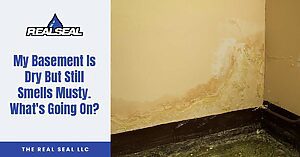It is not uncommon for foundation issues to occur, and you can often see signs of the problem, such as sticking windows and doors or cracks in foundation walls. The good news is these probably aren’t signs your house is going to collapse in the near future. However, that doesn’t mean they should be ignored. Foundation problems are progressive, so even minor issues today will eventually worsen and become more expensive to fix. That is why, if you see the signs of a foundation problem, you should call a foundation repair specialist as soon as possible and ask for an evaluation.
Why Is Foundation Support Needed?
Building foundations are the lowest point of the structure, and they support the home. A solid foundation is needed since the average home can weigh 100,000 pounds or more. The combined weight of the house and foundation rests on the soil in the area. If the soil cannot effectively hold the structure without movement, it becomes necessary to add additional support. Without the proper support, the home will settle into the ground unevenly. All homes settle to a certain extent after they’re built. However, when a house settles unevenly, it’s called “differential settlement,” which can cause serious structural damage.
Foundation problems are a one-way street. Ignoring the problem and hoping it will get better will not help. The issues may be minor at first, but, given time, they will get worse. Eventually, it could lead to foundation failure.
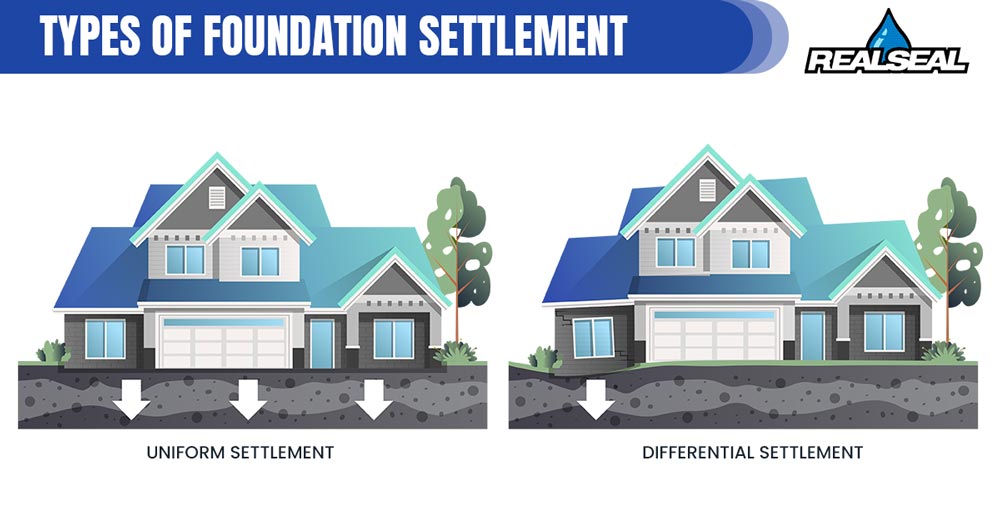
What Causes Differential Foundation Settlement?
As noted above, differential settlement can occur when the soil under the foundation cannot support the structure’s weight. Various things, including the following, can cause differential settlement:
- Expansive Soil: Soil containing a lot of clay swells when wet and shrinks when it dries out. The combination of swelling and shrinking causes movement under the foundation and could lead to differential settlement.
- Erosion-Prone Soil: Some soil types are more likely to erode than others. When soil erodes, it can leave voids under the foundation, leading to differential settlement.
- Improper Construction Techniques: If the soil is not compacted correctly before construction begins, it may not be able to support the structure’s weight, including the foundation.
- Moisture: High moisture levels in the ground around a foundation can cause hydrostatic pressure to build up and push against foundation walls. The foundation walls will eventually bow inward if the pressure isn’t relieved via good drainage. They could even crack.
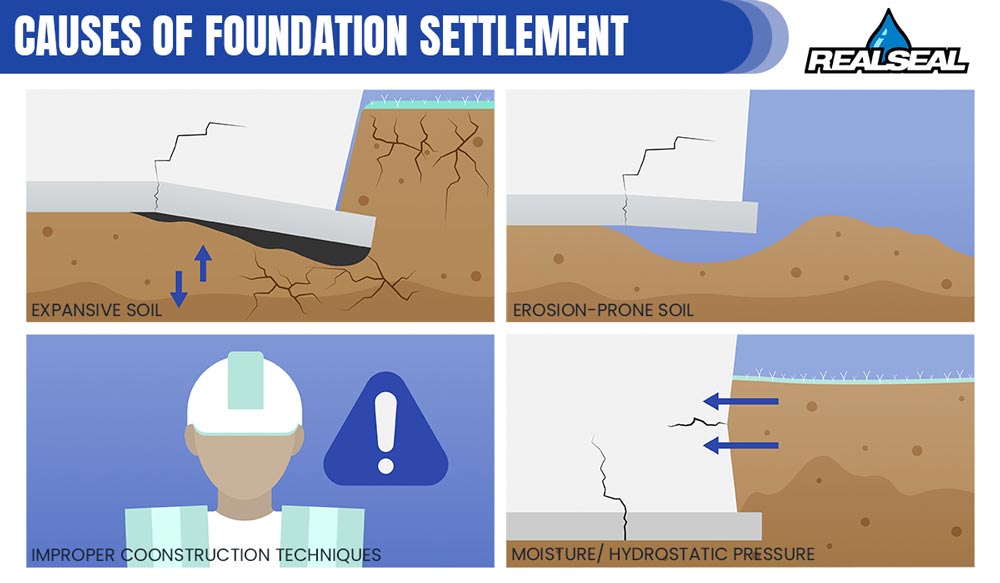
What Are The Signs Of Foundation Problems?
Many homeowners are unaware of the need for additional foundation support until they notice signs of possible failure. These signs include the following:
- Sticking Windows and Doors: As the foundation settles, it strains the home’s frame. This includes the door and window frames, so the doors and windows may begin sticking when they open and close.
- Sloping or Uneven Floors: You may overlook this issue visually, but many homeowners feel as if they are stumbling or get dizzy as they walk across a room with sloping floors.
- Wall and Ceiling Cracks: Cracks may appear in the walls and ceilings. These cracks may expand over time. They may also extend from one surface to another.
- Structural Cracks: Differential settlement may lead to structural cracks in the concrete or block foundation walls. These may include horizontal cracks, diagonal, or stair-step cracks.
- Leaning or Separating Chimney: A chimney leaning away from or separating from the house is another sign of a foundation problem. Cracks in the chimney are also a sign of trouble.
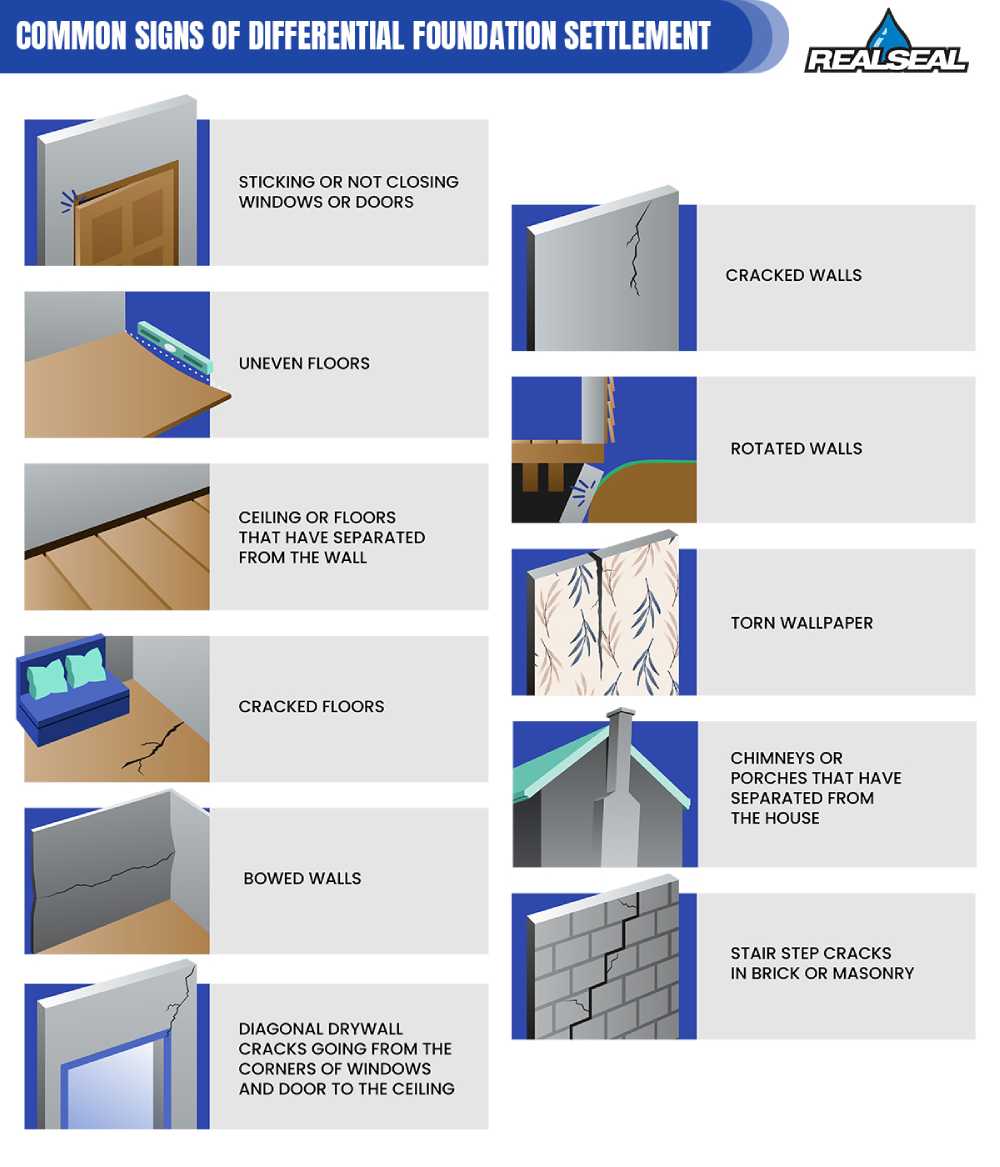
Not all of these issues are signs that a house will collapse, but if you see more than one sign or if they are progressive, it’s time to call The Real Seal for a free foundation inspection.
Signs That A House Will Collapse
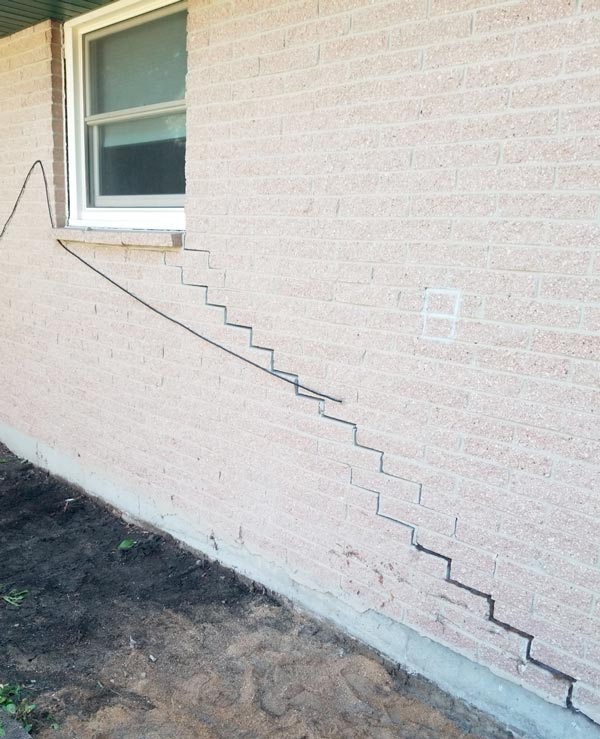
The good news is that just because you have a foundation problem doesn’t mean your house is about to collapse. Foundation problems are progressive, and it may take years for the issue to get to that point. A good example is the Tower of Pisa, which has been leaning for about 850 years. It began leaning because the soft ground under the tower caused it to sink on one side. It is thought that the Tower of Pisa will continue to stand for hundreds of years before it eventually collapses.
Of course, no homeowner wants their home to have an unrepaired foundation problem. Therefore, if you see any of the above signs of a foundation issue, contact an experienced foundation repair contractor right away and ask for an inspection. Foundation problems caught early cost less to repair. If you’re in Chicagoland, The Real Seal offers a free foundation inspection for homes with foundation problems.
How To Provide Enough Foundation Support
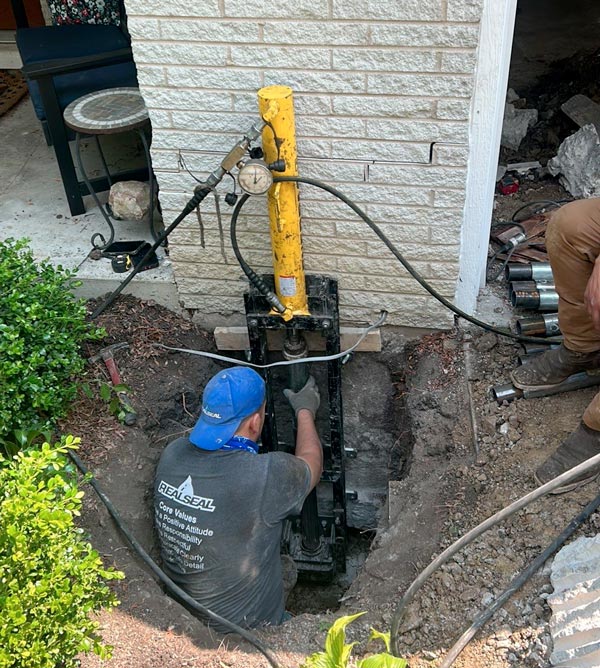
Additional foundation support may be needed in areas with foundation settlement. The extra support, provided with underpinning, can be added as part of the construction or, if required, added later. Underpinning will support the foundation and keep it from settling further. It can also raise a settled foundation as much as possible without causing damage.
The underpinning process uses push or helical piers driven into the earth until stable soil or bedrock is reached. The piers are then attached to the foundation. As a result, the weight of the structure is resting on deep, stable soil rather than the soil at the surface.
It’s important to point out that underpinning is not a DIY project. It requires specialized tools and expertise to get the job done.
Does Your Home Need Additional Foundation Support?
If you are seeing signs of differential foundation settlement, it is essential not to delay getting help. As the foundation shifts and settles, it will lead to more significant problems and could eventually make your home unsuitable for habitation if you wait long enough.
The first step in the repair process is to contact The Real Seal for a foundation inspection. Please fill out the form on our website, and one of our foundation specialists will get back to you to schedule a time to inspect your foundation.
A foundation inspection is more than someone looking at your basement or crawlspace. It is a thorough inspection that looks into the problems you are experiencing and gets to the root of why they are taking place.
Don’t allow foundation problems to keep you from getting the most out of your home. Contact The Real Seal today for your free foundation inspection and repair estimate.
